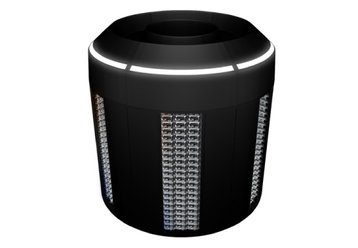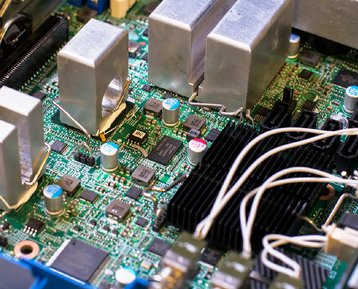We’ve heard a lot about the need for edge facilities, and now it looks like the industry is rising to the occasion with some distinctive offerings that meet that need efficiently.
There’s a horde of Internet of Things (IoT) devices connecting to the Internet (sometimes with disastrous results) and these are producing a mass of local data. At the same time, people are consuming huge quantities of media, and need to have it streamed fast from local caches.
So it’s time to develop good edge data centers. These may well be modular and must operate remotely without manual intervention. They will be more rugged than equipment cossetted in specialized data centers, and may sit in ordinary buildings or on rooftops. We are hearing of many different approaches.
Vaporized
Vapor IO has an interesting proposition: the Vapor Chamber is six racks arranged in a circle, that can be placed on a cement floor and which creates a “chimney” so convection cools them very efficiently.
Vapor has been proposing the Vapor Chamber for whole data center deployments - and now has one such deployment in the Czech Republic. But the company also realized that a Chamber could stand on its own, without any need of a specialized building, and operate as a remote edge data center.
The real heart of Vapor’s edge offering is the software that marshals workloads and moves them between edge sites and central facilities, as well as the management and monitoring software which should minimize the call-outs.
Meanwhile, super-cooled computing specialist Aquila has another option on the way. The company has previously packed large numbers of servers in OCP’s Open Rack cabinets. Now, it’s teamed with modular equipment maker TAS Energy, and is planning to deliver a micro data center.
Liquefied
We’ve not seen pictures of Aquila’s Herma yet, but we’re told it’s going to be eight feet square, and possess entirely liquid-cooled compute, network and storage, with impressive amounts of all three.
Liquid cooling sounds more exotic than air, but the potential here is for a micro facility that is quiet, with no fans, which can be self contained and placed anywhere, more or less regardless of the surrounding temperature.
The reliability factor might be critical, as liquid cooling has long been seen as a technology which pushes the boundaries and incurs penalties of risk. But Aquila uses Clustered Systems’ cold plate technology which sets a hard - but thermally transparent - boundary between the cooling and the electronics. Aquila says that makes for increased reliability - and certainly there will be fewer moving parts in the system.
Edge data centers will be operate remotely without manual intervention. They will be rugged, and may sit in ordinary buildings or on rooftops
There will be plenty more edge data center contenders. It’s an emerging area, and will inspire an evolutionary process with new ideas battling it out.
The first players out into the edge were content delivery networks such as Akamai, and those with their own content such as Netflix. Their specialized solutions valued reliability higher than efficiency.
What we can see from this new crop of ideas is that vendors are now offering efficiency as a key factor behind eventual edge equipment choices.
A version of this story appeared on Green Data Center News




